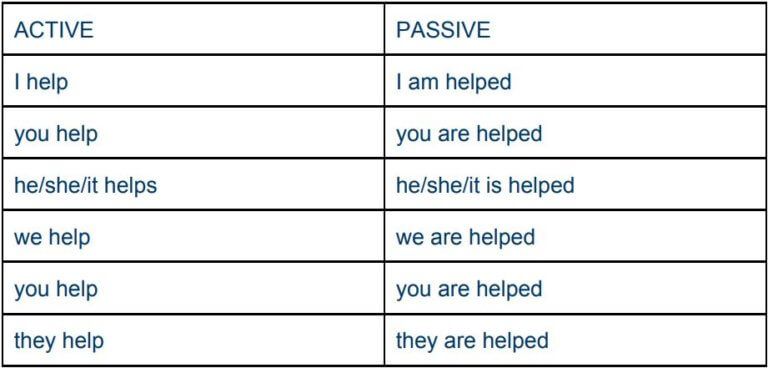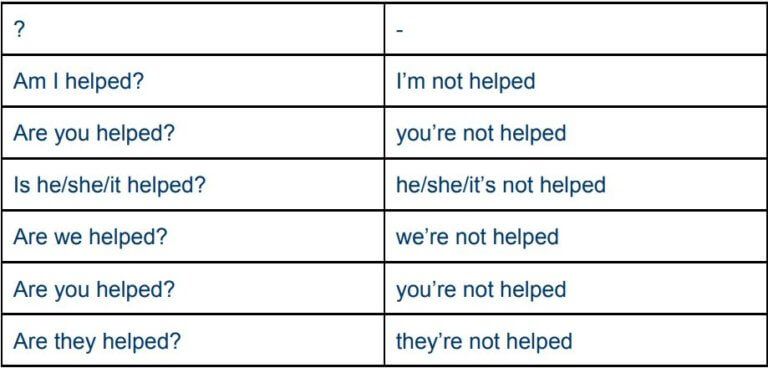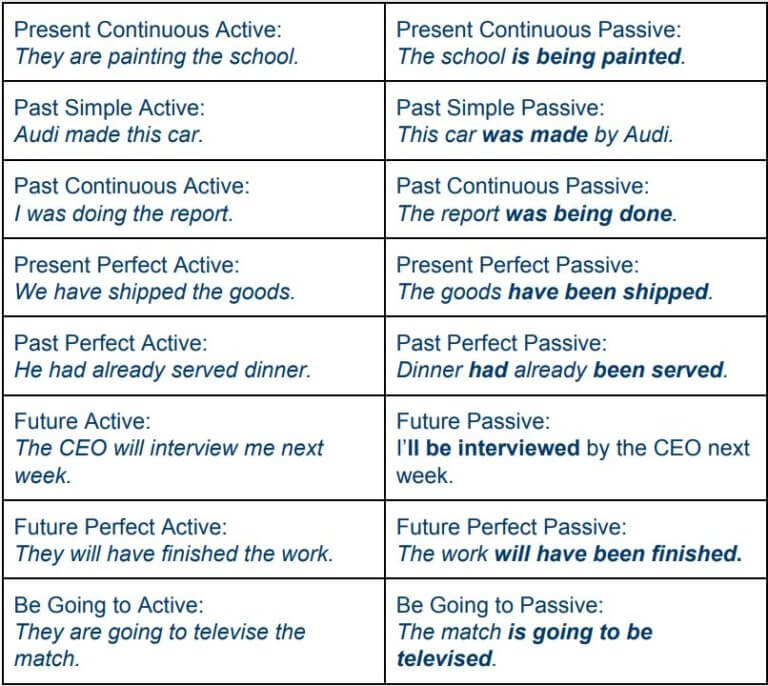The Passive Form
Have you heard people refer to the Passive form and wondered what they meant? Or perhaps you have some idea but find it difficult to use? The passive form is a very useful structure in English, especially for the workplace, and if you can learn to use it you’ll sound like a native speaker! So read on to find out more about the passive form and start putting it to use.
What is the Passive Form?
The passive form is a special structure we use to change the focus of an action. In most cases we make active sentences where the focus is on the subject doing an action. For example:
This company employs 2000 people.
In passive sentences we put the focus on the object that receives an action. For example:
2000 people are employed by this company.
In order to make passive sentences the verb must be transitive, which means that the verb is followed by an object. For example:
to make a cake
to direct a film
to hire someone
If a verb is intransitive we cannot use the passive form. For example:
to think
to talk
to work
How to Make the Passive Form
To create passive sentences we use ‘to be’ + the past participle of the main verb. Here is an example of the structure in the present simple using the verb ‘to help’:

To make questions and negatives we do the same as we always do with ‘to be’ – we invert the subject and verb to make questions, and add ‘not’ for negatives. For example:

When we want to include the agent of an action (the person who did it), we use ‘by’. For example:
The ambulance drivers are helped by volunteers.
The Most Common Uses of the Passive Form
The passive form is used to:
- describe an action when we are interested mainly in the object and not who did it. For example:
The Cathedral was built in the 14th Century.
The roads are cleaned once a week.
- describe processes
The grapes are picked in September.
Then they are packaged and sent to shops.
- describe the artist of a song, book, painting, film, etc.
The Gioconda was painted by Leonardo da Vinci.
E.T. was directed by Steven Spielberg.
- make formal and polite statements by being indirect
Visitors are kindly asked to turn off their phones in the waiting area.
The payment has not yet been made.
The Passive in other Tenses
We can use the passive in several verb tenses. In every case we transform ‘to be’ into the right tense and add the past participle of the verb:

Active or Passive?
If you’re not sure whether to use the active form or the passive form, ask yourself these questions:
- Does the verb have an object? (is it transitive) If the answer is ‘yes’, you can probably use the passive.
- What is more important – the subject or object? If the answer is ‘the object’, the passive form is probably appropriate.
- Is it a formal or informal statement? If it’s formal, the passive could be the best option.
Here are some more examples of the Passive Form:
The criminal was arrested as he came out of the bank.
Interest rates will probably be increased next year.
Who were you introduced to at the meeting? Anyone interesting?
The Christmas cakes are already being distributed.
My grandfather was born in 1898.
We haven’t been informed about the new price list yet.
This book was written by John Grisham. Have you read it?
When we arrived, our bags had already been taken to our room.
Your shirts will have been washed and ironed by 6pm.
My car was being cleaned when it started to rain.
Now practice!
As with all grammatical forms, the best way to become confident in using the passive form is to practice. And one of the most effective ways to practice is to make real examples about yourself. So try answering these questions using the passive form:
- Where were you born?
- Who was your favourite film directed by?
- When was your home built?
- What famous products are made in your country?
Have you heard people talk about the present participle and not been sure what they meant? Find out more here.
The present perfect is a tense that links the past to the present and we never use a finished time with it. Read on to find out more.